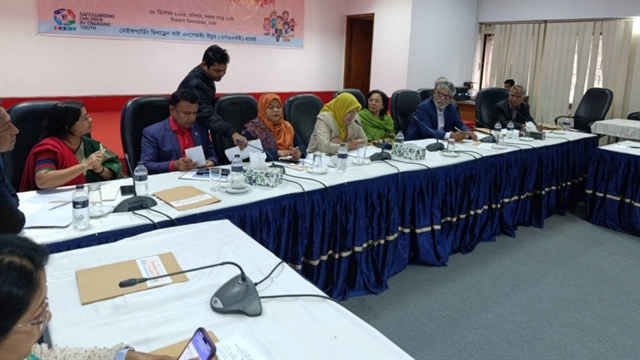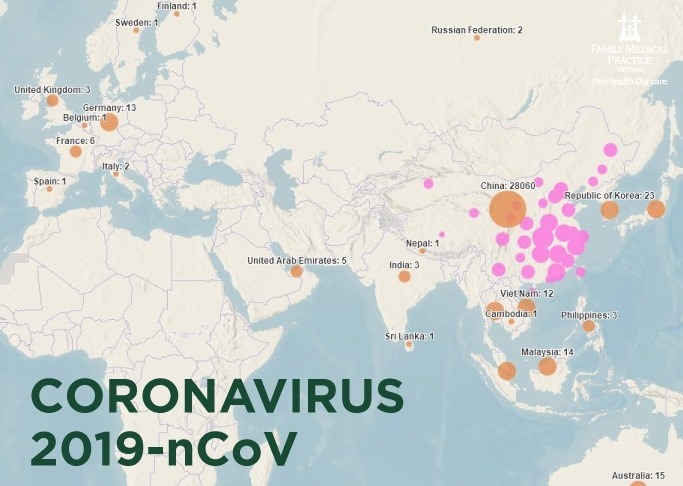 Life & Style
Life & Style

How dangerous is this virus? Will it cause and a pandemic? What are the risks for children? What is the situation in Việt Nam?

|
By Family Medical Practice
nCoV is a new coronavirus discovered in Wuhan, central China. The virus is part of the same virus group that caused the SARS outbreak in 2003 and MERS (Middle East Respiratory Syndrome) in 2012. Coronavirus infects birds and mammals and is found worldwide. The host animal for nCoV is still unknown, but the infection is suspected to have occurred in markets with live animals.
How dangerous is this virus? Will it cause and a pandemic? What are the risks for children? What is the situation in Việt Nam? The situation is currently unfolding very fast and hence it changes day by day. There is at time of writing more than 31,500 confirmed cases and 638 deaths. Cases in patients who travelled from the Wuhan area have also been detected in many other parts of the world and secondary cases are described. Which areas in China are considered to be contagious are changing rapidly? The WHO has announced an international health emergency.
Contact with infected animals in a market was the apparent onset of the epidemic. Person to person transmission seems to occur between people on close contact, for example through droplet infection through a cough. Infectious risk during the incubation period is therefore unlikely. There are also viruses isolated from faeces which might indicate faecal-oral transmission.
The coronavirus incubation period is usually 2-14 days. The symptoms include fever, cough and shortness of breath, muscle and joint pain, in some cases diarrhoea. In severe cases signs of Acute Respiratory Distress Syndrom (ARDS) and organ failure, which is the most common cause of death.
How fast does the virus spread?
The scale of an outbreak depends on how quickly and easily a virus is transmitted from person to person. It is estimated each person with the nCoV could infect between 1.5 and 3.5 people without effective containment measures. This is slightly higher than seasonal influenza but less than measles.
How deadly is nCoV?
The estimate so far is about 2 per cent of those infected dies, this is less than SARS (7 per cent), MERS (30 per cent) and Ebola (30-50 per cent). However, these figures are based on cases from the epicentre of the epidemic. Hubei on February 5 reported 19,665 confirmed nCoV cases with 549 deaths, hence a mortality rate of 2.8 per cent. The rest of China and other countries has reported 8,624 confirmed nCoV cases with 16 deaths, a mortality rate of 0.2 per cent. Many cases are still under care so the figures are preliminary.
Lower mortality might not, however, mean fewer deaths. A virus that kills its host fast can’t transmit to many other people. With longer duration of infection and less mortality, the virus can infect more people and the total number of deaths might be much higher. Seasonal influenza A and B have much lower mortality but infects a lot of people and hence every year cause a high number of deaths.
What is the risk for children?
Like the flu, the elderly and people with serious underlying illnesses suffer the worst. About 80 per cent of the deaths have occurred in patients over 60 years. In the data from China, it seems as children do not get an as severe infection as adults and have lower mortality.
When to suspect infection?
If a person has a respiratory tract infection with fever (greater than 38.5 degrees Celsius) and has visited China within 14 days or had close contact with a confirmed or suspected case within 14 days prior to illness. There are many diseases with similar symptoms as pneumonia, influenza and other viruses.
There is currently no specific treatment available but different anti-viral medicines are being tested. The main treatment is supportive with fluid and oxygen, good hygiene practices and an isolation room.
A general preventative measure is to avoid touching the face or eyes and to avoid contact with sick people, for this the usual face mask might have an effect though it does not block the virus. Special respiratory protection like N95 masks are used in hospitals.
In Việt Nam, at time of writing, there are 12 nCoV confirmed cases. The first reported was a Chinese man who became sick in Nha Trang. His son, who is living in Việt Nam, stayed in the same hotel room and also got infected. They travelled to HCM City where they were diagnosed and treated in Chợ Rẫy hospital, both have now recovered. There are 5 nCoV confirmed Vietnamese patients working in Wuhan from Vĩnh Phúc Province, currently isolated in National Hospital for Tropical Diseases (NHTD). There are another 138 persons who have had contact with these five confirmed cases, of these 18 are considered close contacts, hence highly suspected cases.
Will nCoV spread even more?
Currently, the majority of non-China infections are travel-related, as in Viet Nam. However, if China can’t contain the epidemic and there’s sustained transmission in multiple locations around the world there is a risk for a global epidemic, a pandemic. It is a concern that low- and middle-income countries might not have the capability to detect the virus and do contact tracing, and hence will not be able to contain it. One encouraging feature for tropical countries is that coronaviruses generally spread less when the weather is warm and moist. The development in the next few weeks will determine if this will be the expected pandemic or a rehearsal. — Family Medical Practice
Authors:
Mattias Larsson, MD, PhD, Associate Professor, Family Medical Practice Hanoi, Global Public Health Sciences, Karolinska Institutet, Stockholm.
William Brian McNaull, MD, MPhil (Cantab), DTM&H (London), Medical Director, Family Medical Practice Hanoi
Yaron Atzmon, MD, Clinic Director, Family Medical Practice Hanoi
Family Medical Practice was the first foreign-owned primary healthcare provider in Việt Nam, and has consistently remained at the forefront of international-standard medicine since 1995. It offers extensive healthcare and emergency medical services nationwide to Vietnamese, expatriate and corporate customers.
For more advice on any medical topics, visit Family Medical Practice Hanoi at: 298 I Kim Mã, Ba Đình. Tel: (024) 3843 0748. E: hanoi@vietnammedicalpractice.com.
FMP’s downtown Hồ Chí Minh location is: Diamond Plaza, 34 Lê Duẩn, District 1; 95 Thảo Điền Street, District 2. Tel: (028) 38227848. E: hcmc@vietnammedicalpractice.com
FMP Đà Nẵng is located at 96-98 Nguyễn Văn Linh Street, Hải Châu District, Đà Nẵng. Tel: (0236) 3582 699. E: danang@vietnammedicalpractice.com




